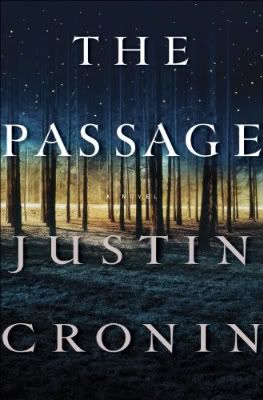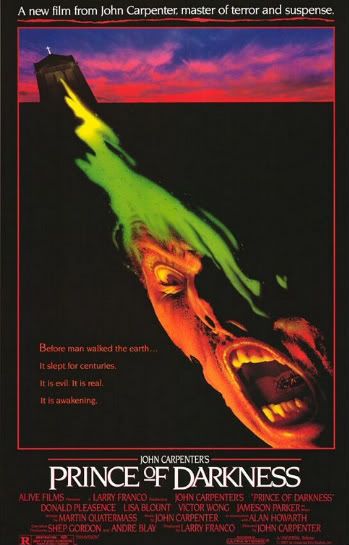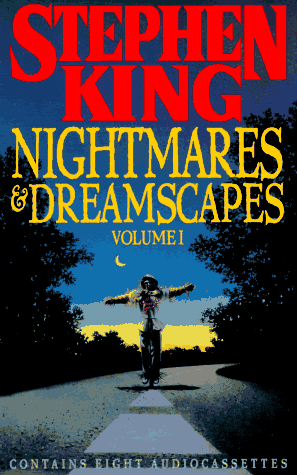Also -- for the same reason -- calling this a "Best of" list is probably somewhat deceiving. I missed a LOT of stuff this year. These are simply the things that stuck out in my mind the most.
Best Movie: Shutter Island
Yeah, I'm surprised by this one too. Looking back at Wikipedia's list of films released in 2010, it's impossible not to be struck by how weak this year really was for movie fans. Granted, I missed the Banksy documentary Exit Through the Gift Shop and I haven't seen The Fighter or True Grit yet, but even if those are as brilliant as everyone has been saying they are, 2010 still sucked the big one for movies.
Objectively speaking, Inception and The Social Network are probably the better movies. But if I'm going to be 100 percent honest I have to say Shutter Island is probably the film I had the most fun with this year. It's minor Scorsese, to be sure, and deeply flawed. But I loved the energy and Scorsese's complete committment to the movie's pulp, overwrought tone and story. You can just feel the fun everyone was having making this. Mark Ruffalo's understated performance manages to anchor an otherwise wildly histrionic experience, and Michelle Williams' gooseflesh-inducing final scene still sticks with me.
Honorable Mentions: The Social Network, Un Prophet, Inception, 127 Hours
Biggest Disappointment: Black Swan
I was really looking forward to this one. The trailer made it seem like it was going to be Darren Aronofsky at his Pi/Requiem For A Dream mind-exploding best. Instead it's merely a decent, mostly watchable thriller with a half-baked script that borrows liberally from much better fare like Repulsion and a central performance (by Natalie Portman) that is one of the most irritating things I've seen onscreen since Jar-Jar Binks.
Best TV: The Walking Dead
The above scene encapsulates everything I love about AMC's new Frank Darabont-produced zombie saga. After too many years of watching my beloved zombies reduced to a joke and a silly punchline in movies and books, finally we get something that -- like Romero's original Night of the Living Dead and Dawn of the Dead -- actually takes the idea seriously. Think about it: a zombie apocalypse is about the most horrifying concept anyone can think of. To survive you're not just forced to shoot shambling, flesh-eating ghouls ... you'd have to put a bullet in the brains of your friends, your brothers and sisters, your husbands and wives, maybe even your children.
Zombies aren't funny. Zombies are tragic.
The Walking Dead does for zombies what Battlestar Galactica did for space operas. The show has moments that are truly thrilling and genuinely scary, but the overall tone is one of contemplative sadness. That phrase may not sell the show to the more ADD-prone amongst us, but for a zombie purist like myself it came as a truly welcome breath of fresh air.
Honorable Mention: Sons of Anarchy Season 3
Best Book: The Passage by Justin Cronin

I already wrote a pretty long review of this one, so I won't say too much about it here. Suffice it to say that this book works in much the same way as The Walking Dead. It takes an over-familiar horror concept -- in this case a vampire apocalypse -- and elevates it to something that approaches high art. This book pretty much single-handedly renewed my faith in the possibilities for horror fiction.
And it's the first in a trilogy! I literally cannot wait for the second installment.
Honorable Mention: Full Dark No Stars by Stephen King (you can also read my review of this one)
Biggest Disappointment: The Girl Who Kicked the Hornet's Nest by Stieg Larsson
The last in Larsson's immensely popular Millenium trilogy was a decent enough book, but ultimately it was kind of anticlimactic after the superlative The Girl With the Dragon Tattoo and The Girl Who Played With Fire. Lisbeth Salander -- one of the most badass heroines in the history of modern fiction -- spends most her time in a hospital bed or a courtroom. As much as I enjoyed the book, overall I'd have to say it was a big letdown. This is probably because it was not actually meant to be the end of the trilogy, but became so after Larsson's untimely death. Here's to imagining what could have been...
Best Album: High Violet by The National
This came out of nowhere for me. I read a little blurb about these guys in Rolling Stone that said they were influenced by Nick Cave, so I downloaded it from iTunes figuring it'd be something I'd listen to once and forget about. Instead, it hasn't left my earphones for more than two weeks at a time. The album is a simple, gorgeous, and melancholy wonder. I listened to it nonstop while reading The Passage, and I think the pairing improved both the album and the book for me. The second track, "Sorrow," can still bring a tear to my eye if I'm in the right (or wrong) mood.
If you haven't taken the time to listen to it yet, do yourself a favor and give it a spin. If it doesn't pluck at your heart strings, you're probably either a serial killer, a politician, or you work on Wall Street.
Honorable Mention: Grinderman II by Grinderman
Best Home Video Discovery: (tie) Moon (2009) and The Wire (2002-2008)
All I'm going to say is that Moon might be the best movie I've seen in ten years and The Wire is the best television show, ever. You might disagree. But you'd be wrong.






























